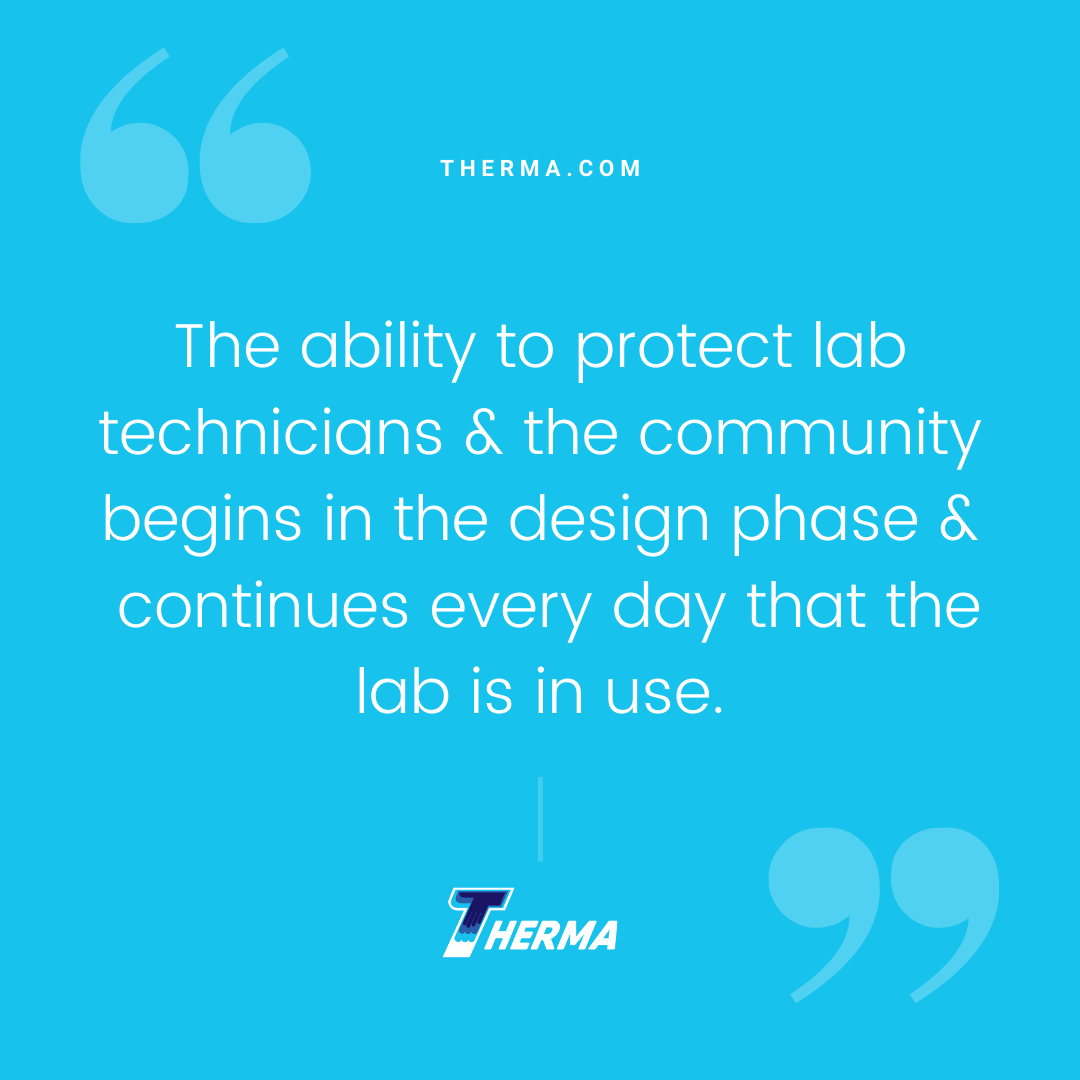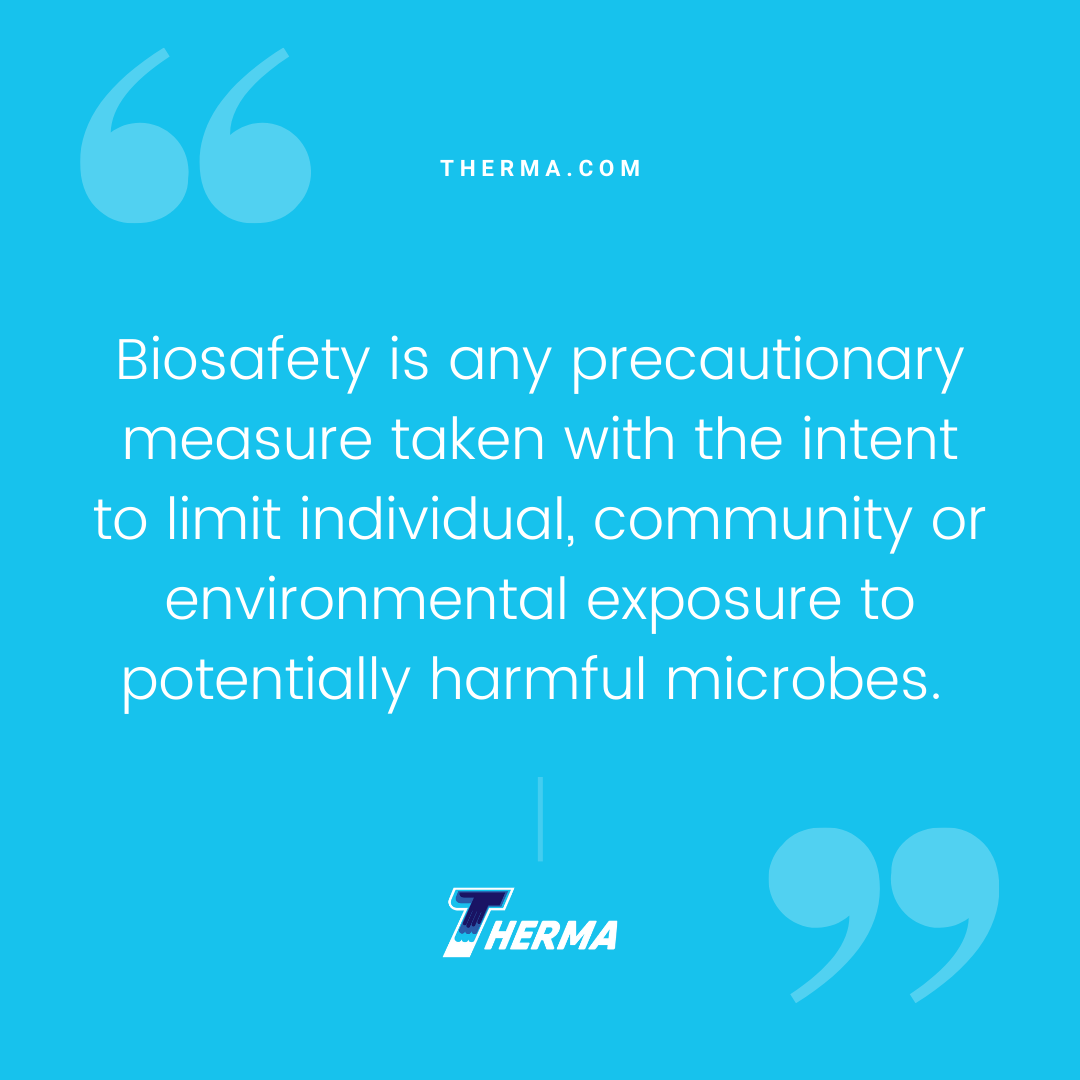by Patti Dees
Biosafety includes more than lab procedures. It can include special ventilation systems and other design features to reduce hazards associated with a biological specimen. The ability to protect lab technicians and the community begins in the design phase and continues every day that the lab is in use.
What Is Biosafety?
Biosafety is any precautionary measure taken with the intent to limit individual, community or environmental exposure to potentially harmful microbes. These measures focus on access to safety equipment and limiting contamination. However, not all risks are equal and not all safety controls make sense for every situation.
The Centers for Disease Control and Prevention (CDC) divides lab risks and their associated safety measures into four biosafety levels (BSL), each building on the requirements of the levels below it. Factors which determine a laboratory’s level depend on the microbe and the severity of the potential disease. They include:
- How easily the microbe can infect cells.
- The route of exposure.
- The microbe’s origin.
- The severity of the potential disease.
- How easily the disease can be transmitted.
- The nature of the work with the microbes.
Containment controls required for each level include lab procedures, safety equipment and facility construction elements.
Breaking Down Biosafety Levels
Some standards apply to all biosafety levels. Restrictions on eating and drinking are routine. Cleaning hands and workspaces to prevent contamination and working with the smallest possible volumes of hazardous materials are also key to safety. The requirements set out for each of the biosafety levels target more advanced requirements.
BSL-1
This is the lowest level of risk. The biological agents do not pose a significant threat to most adults. Lab personnel can work at open lab benches or tables, using personal protective equipment (PPE) such as a lab coat, gloves and eye protection as needed. The facility needs a sink for washing hands and doors that separate the lab space from the rest of the building.
BSL-2
Labs working with biological agents which pose a moderate hazard and exposure mechanisms of ingestion, open skin or mucous membrane contact fall under BSL-2. Lab access is restricted while work is conducted and the PPE from BSL-1 are now required. If infection from aerosols and splashing is possible, work should be conducted in a biological safety cabinet (BSC). Disposal requires a method for decontamination, such as an autoclave. The lab space requires self-closing doors, and both a sink for handwashing and an eyewash station.
BSL-3
This level applies to labs working with high-risk microorganisms that can cause serious or lethal disease and aerosol or respiratory transmission. Staff should be under medical surveillance and may receive immunizations related to their work. PPE must be worn, and respirators may be required. All work with microbes needs to be performed in an appropriate BSC. Lab access is restricted and controlled at all times. Requirements within the lab space include:
- All wall penetrations must be sealed,a hands-free sink and eyewash station must be near the exit
- Exhaust air cannot be recirculated.
- The direction of airflow should draw air into the lab from clean areas to potentially contaminated areas.
- Access is controlled through two sets of self-closing and locking doors.
Depending on the risks for an individual lab space, a HEPA filter for exhaust and an effluent decontamination system is optional.
BSL-4
The fourth level is the most stringent. Any work relating to dangerous and exotic microbes, a high risk of aerosol transmission, and infections that are fatal with no treatment or vaccine available falls under BSL-4. Staff need to change clothes before entering the lab. All work requires a full body, air-supplied, positive pressure suit or a Class III BSC. Everything, including staff, are subject to decontamination protocols before leaving the lab. Lab personnel should shower before changing back to street clothes.
The lab must be in a separate building or placed in an isolated and restricted part of the main building. It requires a dedicated ventilation system, vacuum lines, exhaust HEPA filter and effluent decontamination systems.

Lab Safety by Design
Additional facility construction requirements are determined by building codes and occupancy classification. Requirements run from using specific fire-resistant building materials to ensuring that equipment can be easily and safely used no matter an individual’s height or disability status. Given the importance of some requirements to contain potential safety concerns, redundancy may need to be built into the design.
Biosafety also impacts some emergency design elements such as the type of fire suppression system, placement of shut off valves and a centralized location for emergency supplies. Some areas of the country may require seismic or tornado-resistant design to further safeguard the community in case of disaster. Standards determine water temperature range and flow rates for safety showers, eyewash stations and sinks.
As biosafety standards and technology change, equipment and design features need to be upgraded. There are a few ways lab facilities can incorporate flexibility for future needs. For instance, including interstitial space allows for changes and provides an added buffer between the lab and surrounding areas.
Biosafety with Therma
Some safety elements are great opportunities to consider automation. Security and access control systems, electronically monitored mechanical systems, and airflow alarms to ensure proper ventilation are examples of building processes in which process controls and automation systems can help. Therma’s professionals are experienced in biomedical and biotechnical mechanical systems construction and maintenance and can offer innovative solutions in plumbing, HVAC and process controls.
Patti draws on her background as a chemical engineer to share information with readers on technology, manufacturing and construction.
Sources
Centers for Disease Control and Prevention (CDC) – Recognizing the Biosafety Levels
Centers for Disease Control and Prevention (CDC) – Infographic: Biosafety Lab Levels
Centers for Disease Control and Prevention (CDC) – Biosafety in Microbiological and Biomedical Laboratories, 6th Edition
Whole Building Design Guide (WBDG) – Security and Safety in Laboratories








